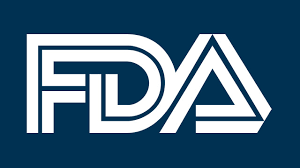We recently received this question from a wholesaler. Their business relied in purchasing serialized products, removing each single unit vials from the box and selling each individual vials to physicians. The problem is that each vial does not have a serial number. Can they do that? Let’s analyze.
Wholesaler Question: Am I able to break down my package and sell individual vials without Serial numbers?
Let’s say you receive a box of vials. The box is serialized, but each vial is not. Are you able to sell each vial individually without a serial number to a physician? Let’s analyze.
Under the DSCSA a physician is a dispenser and must follow all dispenser requirements. They have to follow the DSCSA. They are required to receive serialized products starting November 2020, just like all dispensers. They are not required to receive a T3 but manufacturers and wholesale distributors are still required to provide it to them (physicians can probably ignore it or throw it away even).
Individual Vials
Prior to the DSCSA, wholesalers would open a box of vials and sell just one if a customer only wanted one. Manufacturers were always unhappy about that practice. But with the DSCSA that practice has come to a screeching halt, because wholesalers cannot legally sell units that are not serialized by the manufacturer. This gives power back to the manufacturer to define exactly what should be sold to dispensers, but it might be a double edge sword. They may actually sell less because those dispensers who only want one vial are not likely to now buy a box of 30. They’ll do something differently so they don’t risk holding 29 vials that might go out of date before they get another patient who needs that drug. So it puts the onus back onto the manufacturer to offer smaller quantities with serial numbers…including considering serializing every vial.
According to the requirements for the next phase of DSCSA implementation, wholesale businesses that operate within the drug supply chain must follow certain protocol. This includes participating only in the buying or selling of pharmaceutical products that have been properly serialized and verifying product identifiers on sealed homogenous cases or on saleable units.
To make the process less burdensome on the company’s overall operations, here are a few things for wholesalers to keep in mind as they prepare for the year ahead and the 2020 DSCSA deadline.
“ With less than a year until enforcement, wholesalers should begin working on how they will receive and track serialized product and begin the implementation process sooner rather to identify challenges and help employees through an unavoidable learning curve. ”
Verification Requirements
As a wholesaler, any shipment you receive from a pharmaceutical supplier after November 2020 must be verified using the serial number, barcode and any other additional identifying data. Any discrepancy, such as an error in the National Drug Code (NDC) number or quantity will demand that a specific process for quarantining the product or sending it back will be required, except in instances where a non-labeled product has been grandfathered.
With less than a year until enforcement, wholesalers should begin working on how they will receive and track serialized product and begin the implementation process sooner rather to identify challenges and help employees through an unavoidable learning curve.
Explore Technology Solutions for Saleable Returns
Once the November 2020 deadline hits, wholesalers will be required to verify the product identifier on any returned product that they have the intention of reselling. One of the key components of the 2020 verification and authentication requirements is that wholesalers will not be able to resell any pharmaceutical product unless they are able to supply accurate, compliant documentation beforehand.
This process will prove to be rather complex, considering that records will need to include all identifying data from the manufacturer as well as the source of the returns. Wholesalers should begin looking into technology solutions that will streamline the process for recording all necessary data for returns so that they’re able to efficiently produce any required documentation for resale purposes.

Scanning technology will be a must for data storage.
Data Storage
Traceability and serialization data is the primary element that connects all members of the drug supply chain. As a wholesaler, your ability to manage this data is a critical component in your ability to meet the demands of the DSCSA. Building a system to manage this data is also one of the biggest challenges you’ll encounter on the road to compliancy.
Now is the time to begin looking at how data is handled within your wholesale company. For instance, you’ll want to implement one central storage repository for data. This includes a system for verifying, storing and exchanging the NDC or GTIN with other trading partners in the drug supply chain. When developing this system, it’s important to keep flexibility in mind. We are currently only half way to complete DSCSA implementation, which leaves plenty of room for amendments and modifications. Likewise, you’ll also want to consider your own growth as a wholesaler and invest in a data storage system that will eliminate growing pains along the way.
Don’t Expect Leniency
While the FDA was willing to issue a one year extension on the enforcement of their 2019 deadline, it’s unlikely that wholesalers will be granted the same leniency when November 2020 comes around. This deadline demands that wholesalers not only commit to accepting and selling verified products that contain the appropriate identifiers, they must also have a complete system in place for gathering data and validating the returns process. At the beginning of 2020, proactive wholesalers should already be invested in the process of meeting these goals.
What the Draft Guidance Says About Product Identifiers
The guidance, titled “Product Identifiers Under the Drug Supply Chain Security Act Questions and Answers – Guidance for the Industry” outlines what the FDA believes to be the method of product identification that is most likely to mitigate the potential for human error. In the guidance, the FDA suggested that the National Drug Code (NDC) be used in place of the commonly used Global Trade Item Number (GTIN).
The reasoning behind the suggestion is that the FDA believes that the GTIN, which is not in a 3 segment format and often contains additional digits, could lead to improper identification of pharmaceutical products. In contrast, the NDC is a 10 to 11 digit number that the FDA assigns in a 3 segment format. While standard industry practice is to incorporate the NDC into the GTIN, this is not always the case. The FDA’s main concern is that by using the GTIN alone in the human readable portion of the product identifier, that the potential for improperly identifying the NDC and the pharmaceutical product is increased – which is in opposition of the overall goals of the DSCSA.
The FDA’s suggestion is that companies use the NDC in the human readable portion of the product identifier, and that they may then also voluntarily imprint or attach the GTIN on the label.
What the Major Trading Partners are Saying
There has been an overwhelming response by drug makers and industry groups across the board saying that the FDA should reconsider its recommendation to use the NDC when it issued its final product identifier guidance. Some of the largest corporations in the drug supply chain have voiced concern over the guidance. Those who have expressed their concerns include the Biotechnology Innovation Organization (BIO), Bristol-Myers Squibb, the Healthcare Distribution Alliance, and Bausch + Lomb, a Canadian based healthcare supplier.
Combined, their arguments mostly center on the fact that the GTIN, which typically incorporates the NDC, has been used without issue for years. Changing the standard protocol could actually produce the opposite of the desired effect and increase the potential for human error in identifying pharmaceutical products.
There are also concerns that the NDC is a United States specific format, which creates additional challenges for pharmaceutical security on a global scale. Pharmaceutical companies that operate on a global level, including the Association for Accessible Medicines, are rightfully concerned about this and have suggested that the FDA allow trading partners a greater amount of flexibility in product identification requirements so that pharmaceuticals may contain globally recognized identification elements.
Additionally, many companies have already invested in using the GTIN as the primary product identifier and changing this will undoubtedly put additional stress on companies as they work to restructure labels that, in their opinion, already contain all the necessary elements for clear and proper product identification.

What’s the Problem with the NDC?
One of the biggest concerns the industry has for using the NDC alone is in sharp contrast of the FDA’s suggestions as to why it’s the best choice. While the FDA is concerned that the GTIN on its own is not enough to secure proper product identifications, companies are worried that the NDC alone doesn’t supply enough information in the human readable form and that this will lead to an increase in misidentified products.
For instance, the NDC for any given pharmaceutical may be the same regardless if the medication is in a single unit, bundle or case packaging. There isn’t a real differentiating factor between the identifying number of a single unit versus an entire case. This could cause significant issues with inventory and the proper documentation that the DSCSA requires trading partners to keep.
On the other hand, the GTIN for each package type would be different but still include the NDC as part of the identifying code. This would allow for companies to easily identify the type of pharmaceutical and also the packaging that it came in.
While the FDA’s guidance suggested using the NDC in the human readable form of the product identifier, it did still support the use of the GTIN in machine readable 2-D barcodes. Still, concerns over the resources needed to switch to a human readable NDC identification format and the overall effectiveness of the system abound.
What companies in the drug supply chain are looking for is to be allowed more flexibility in product identification methods. Not only in whether or not they use the NDC or GTIN but also other details, such as the formatting of the expiration date. The current FDA guidelines suggest one of two variations of a year/month/date format.
Free VRS Evaluation
With the deadline fast approaching, contact TrackTraceRx today to receive a free evaluation of your VRS strategy to comply with the DSCSA Saleable Returns. This free consultation will allow you to have a piece of mind that you are following the correct procedures in order to meet ALL DSCSA requirements. TrackTraceRx will also provide you with a FREE Standard Operating Procedure (SOP) template which is required by the DSCSA during a FDA inspection.




